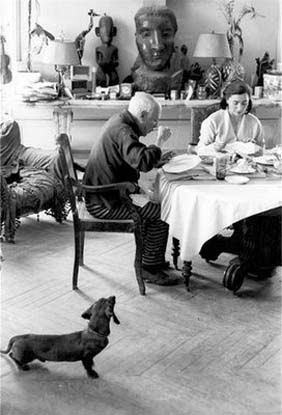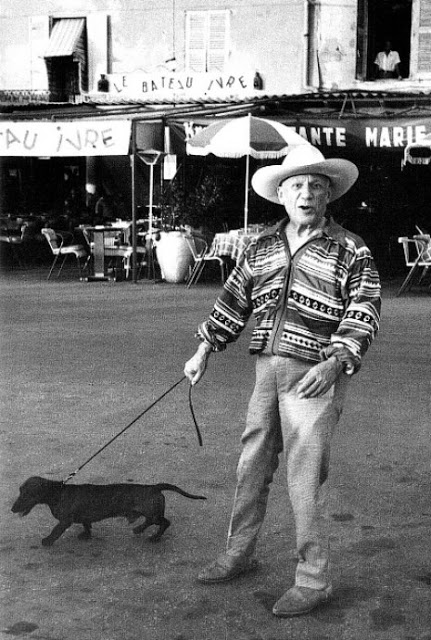 Prince Philip, Duke of Edinburgh; Queen Elizabeth II. Photo by Terry O’Neill, 1992
Prince Philip, Duke of Edinburgh; Queen Elizabeth II. Photo by Terry O’Neill, 1992
 English composer Benjamin Britten and “Clytie”.
English composer Benjamin Britten and “Clytie”.
In this photograph taken by Yousuf Karsh, Britten is shown holding a dachshund and looking towards the score from his opera Gloriana (1953) which was written for the coronation of Elizabeth II. According to Karsh “the dog demanded to become part of the picture”.

 John F. Kennedy, Lem Billings and Dunker, Den Haag, The Netherlands, 1937
John F. Kennedy, Lem Billings and Dunker, Den Haag, The Netherlands, 1937
 Lee Radziwill and Andy Warhol with his dog, Archie. Photo by Ron Galella, Montauk, 1973
Lee Radziwill and Andy Warhol with his dog, Archie. Photo by Ron Galella, Montauk, 1973
 Christa Päffgen a.k.a. Nico. Photo: Mark Shaw for Life Magazine
Christa Päffgen a.k.a. Nico. Photo: Mark Shaw for Life Magazine
 Adele and “Louie”, named after Louis Armstrong
Adele and “Louie”, named after Louis Armstrong
 Vincente Minelli and Katharine Hepburn playing with George Cukor’s pet
Vincente Minelli and Katharine Hepburn playing with George Cukor’s pet
 Juliette Gréco. Photo by Robert Doisneau
Juliette Gréco. Photo by Robert Doisneau
 Jacques Cousteau, his wife and “Scaphandrier”
Jacques Cousteau, his wife and “Scaphandrier”
 David Hockney with Stanley and Boodgie
David Hockney with Stanley and Boodgie





 Pablo Picasso and Lump. Photographer David Douglas Duncan published a book of Picasso’s pictures along his pet, which was titled A Dachshund’s Odyssey
Pablo Picasso and Lump. Photographer David Douglas Duncan published a book of Picasso’s pictures along his pet, which was titled A Dachshund’s Odyssey
 The gardener and writer Christopher Lloyd at Great Dixter House, a 450-acre estate restored by Edwin Lutyens. Awarded in 1979 the Victoria Medal of Honour, the highest horticultural accolade, Lloyd was the best informed, liveliest and most innovative gardening writer of our times.
The gardener and writer Christopher Lloyd at Great Dixter House, a 450-acre estate restored by Edwin Lutyens. Awarded in 1979 the Victoria Medal of Honour, the highest horticultural accolade, Lloyd was the best informed, liveliest and most innovative gardening writer of our times.
 Within the Wall Garden of Great Dixter is a terrace, with a pebble mosaic of Christopher Lloyd’s two beloved dachshunds, Dahlia and Canna. The stones for Canna’s eye and nose were acquired from Derek Jarman’s rock-garden, at Prospect Cottage, in Dungeness.
Within the Wall Garden of Great Dixter is a terrace, with a pebble mosaic of Christopher Lloyd’s two beloved dachshunds, Dahlia and Canna. The stones for Canna’s eye and nose were acquired from Derek Jarman’s rock-garden, at Prospect Cottage, in Dungeness.






























